UBC COMM 205 - Exam A - K version
1/180
There's no tags or description
Looks like no tags are added yet.
Name | Mastery | Learn | Test | Matching | Spaced |
|---|
No study sessions yet.
181 Terms
Information Systems
collects, processes, stores, analyzes, and disseminates information for a specific purpose
Explain this curve and what section is represented by what group
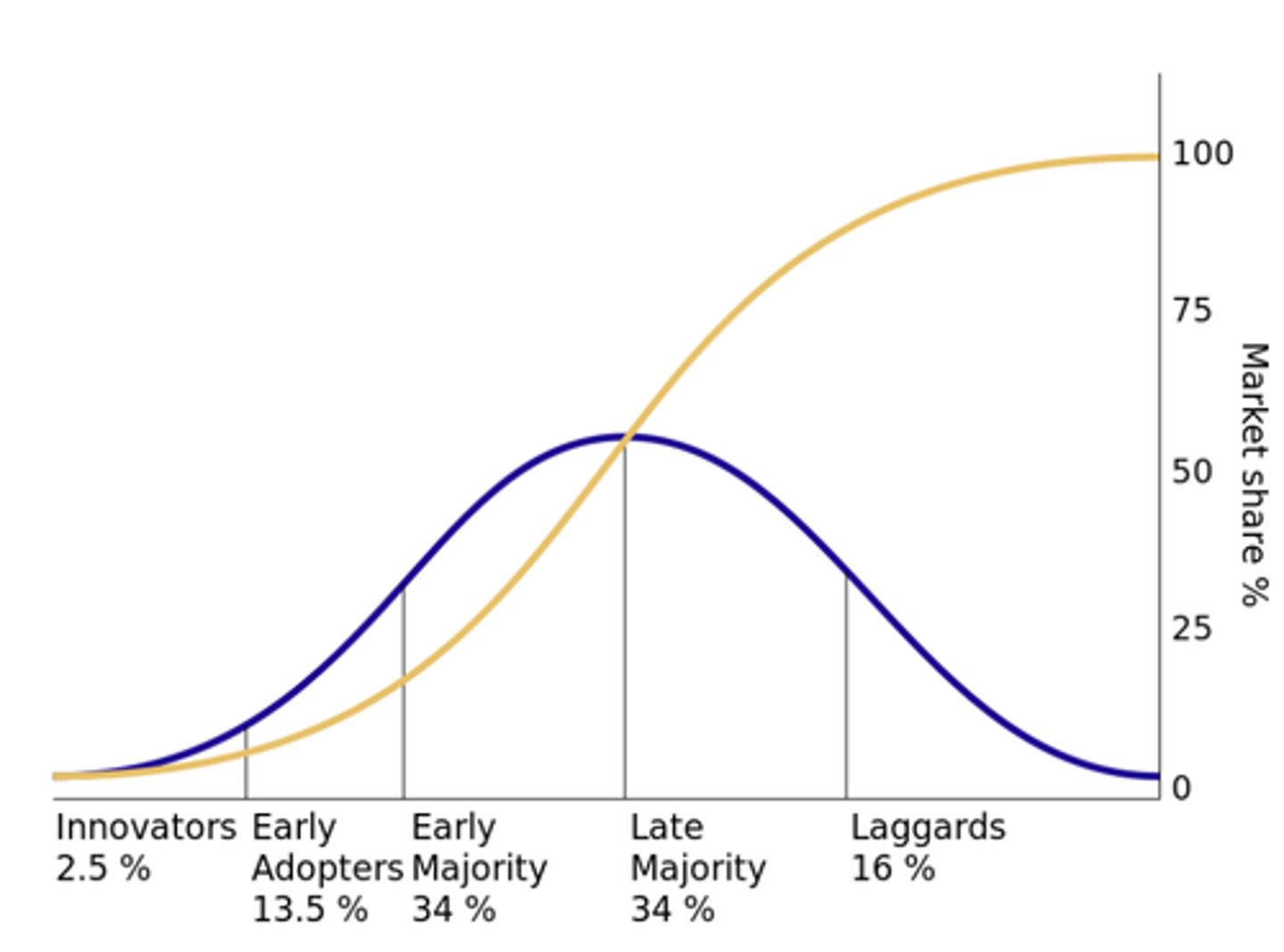
Information Technology (IT)
Any computer-based tool that people use to work with information and support the information and information-processing needs of an organization
What are the components of Information Systems
hardware (actors), software (intrusctors), data (bridge), procedures (instructors), people(actors)
Data
raw facts that describe the characteristics of an event or object
information
Data converted into a meaningful and useful context
knowledge
information that facilitates action (explicit vs tacit knowledge)
wisdom
The combination of knowledge and experience to make sound decisions or judgements
tacit knowledge
strategies for success that are not explicitly taught but that instead must be inferred
explicit knowledge
knowledge that is easily communicated and available to everyone
Who are the people in IS?
Creators, Operators, Managers, Users
Creators
System Analysts, Programmers, Comp Engineers
Operators
Operations and Administrations - involved in the day to day operations. Computer operator
Capabilities of Information Systems
1. Perform high-speed, high-volume computations
2. Provide fast, accurate communication and collaboration
3. Store huge amounts of information in a small space
4. Allow quick and inexpensive access to info, worldwide
5. Interpret vast amounts of data quickly and efficiently
6. Automate business processes and manual tasks
Generation 1 - Vacuum Tubes
late 1930s - mid 1950s
Large, fragile, complex and expensive
Requires cooling system
One program at a time
Housed at universites
e.g. ENIAC
Gen 2 - Transistors
Mid 1950s - Mid 1960s
First digital computing machines used in businesses and government
Simpler, smaller, faster
Lower power required and less heat
Simpler and smaller.
e.g. IBM 650 -> first mass-produced computer
Gen 3 - Integrated Circuits
Mid 1960s - Early 1970s
Silicon Chips
Smaller, faster, cheaper
Keyboard input, monitor output
e.g. CICS, IBM TPS
Gen 4 - Microprocessors
Early 1970s - Present
CPU (central processing unit)
GUI (graphical user interface)
Mouse
Floppy drive
e.g. Apple Macintosh
Gen 5 - AI
Early 2000s - Present
Parallel processing and superconductors
Nanotechnology
Natural language input
e.g. Siri
Networking Personal Computers
mid 1980-Present
-Critical to the rapid adoption of personal computers and rise of
social networks
Local Area Networks (LANs)
-linking many personal computers together
-shared access to data, printers, and other peripheral devices
Wide Area Networks (WANs)
-the Internet
-web browsing
Mobile Computing
Late 1990s to Present
A real-time connection between a mobile device and other computing environments, such as the Internet or an intranet.
Cloud Computing
Mid 2010s-Present
- customers do not own the computer
- the practice of using a network of remote servers hosted on the Internet to store, manage, and process data, rather than a local server or a personal computer.
- rent usage from 3rd party provider and consume computing resource as a service
Computer Hardware
The physical components of a computer.
Inputs (keyboard, mouse, etc) --> Process (CPU, main memory) --> Output (printer, video display)
input hardware
Accept or capture data.
Direct: keyboard, mouse, document scanner, bar code, microphones.
Indirect: Scanners, Digital Cameras, Biometric Systems
output hardware
Hardware that is used to create outputs, data flows out of the hardware (speakers, printers, Screen projections etc.)
Bits
binary digits (0s and 1s)
Bytes
8 bit chunks (represents one character)
In 1024 - mostly rounded down to 1000 for simplicity.
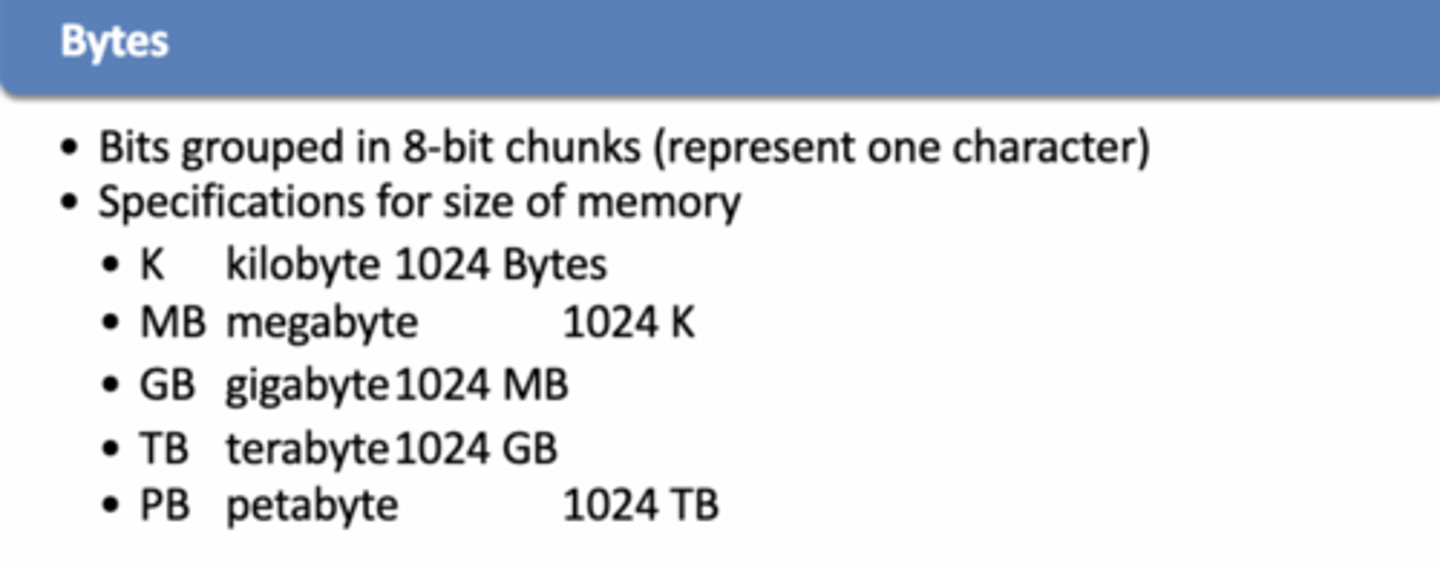
Motherboard
A circuit board that contains all of the computer system's main components.
- Socket for the CPU
- Primary Memory
- Buses
discrete values
only occur in whole numbers (integers)
What components must connect to the motherboard?
Socket for the CPU (Microprocessor)
Primary Memory
Buses
Ports and Expansion Slots
buses (computer)
Data channles within the motherboard that move data
CPU (Central Processing Unit)
The internal operating unit or "brain" of a computer.
Moves instruction from main memory via data channel or bus
Speed expressed in Hertz (Hz)
Has small amount of very fast memory called cache
cache
Very fast memory that keeps frequently used instructions.
The type of memory which helps speed up the overall throughput of the CPU.
Memory
Main Memory (RAM)
- Contains Operating System instructions
- Contains program instructions
Memory Swapping
- Main memory too small to hold all data
- CPU loads programs into memory in chunks
program instructions, operating system instructions.
What happens if I have too little RAM
Constant memory swapping, slows processing, needs more memory if processing many programs.
Primary Storage
The computer's immediate internal memory, RAM and ROM.
When a CPU needs data: goes to RAM
RAM
Random Access Memory
Volatile - Deleted when turned off
Working Memory
ROM
Read Only Memory
Non-Volatile
Stores Permenant instructions
Use to boot up machine
Secondary Storage Devices
Non Volatile - Compact Disk, Digital Versatile (Video), DVD, Blu-ray Disk, Hard disk, floppy disks, CD, jump drives
flash memory (secondary storage)
Type of nonvolatile memory that can be erased electronically and rewritten.
Solid State Drive (SSD), Flash Memory Drive,
Client computer
Computer on a network that uses services provided by a server. Connects to internet to check email, databases, etc
Server Computers
provide access to information and application
-faster, larger, more powerful
-serve resources to client computers
-the Cloud is a term assigned to servers accessible anywhere and anytime (over the internet)
-dedicated: mail, file, web, applications, database, etc.
What are the 2 types of computer software?
OS and Application Software.
Firmware
Software that is permanently stored in a chip. The BIOS on a motherboard is an example of firmware. Required because all volatile memory is lost when the computer is shut down.
BIOS
Basic Input/Output System
Required because all volatile memory is lost when the computer is shut downFirmware
Used when a computer is booted up
Operating Software
software that operates the computer
- Windows
- MacOS
- Linux
- Movile (iOS, Android)
Applicaiton Programs
Perform Specific user tasks.
Buy off Shelf vs Custom Developed
proprietary software
Software that has been developed by a company and has restrictions on its use, copying, and modification.
Users buy license to use program
open source software
noncommercial software shared freely and developed collectively on the internet
3 Types of Application Software
Application Software consists of programs that perform a business function: MS Office, Canvas
horizontal market application
vertical market application
one-of-a-kind custom application software
Horizontal-market application
software provides capabilities common across all organizations and industries
Word Processing, spreadsheets.
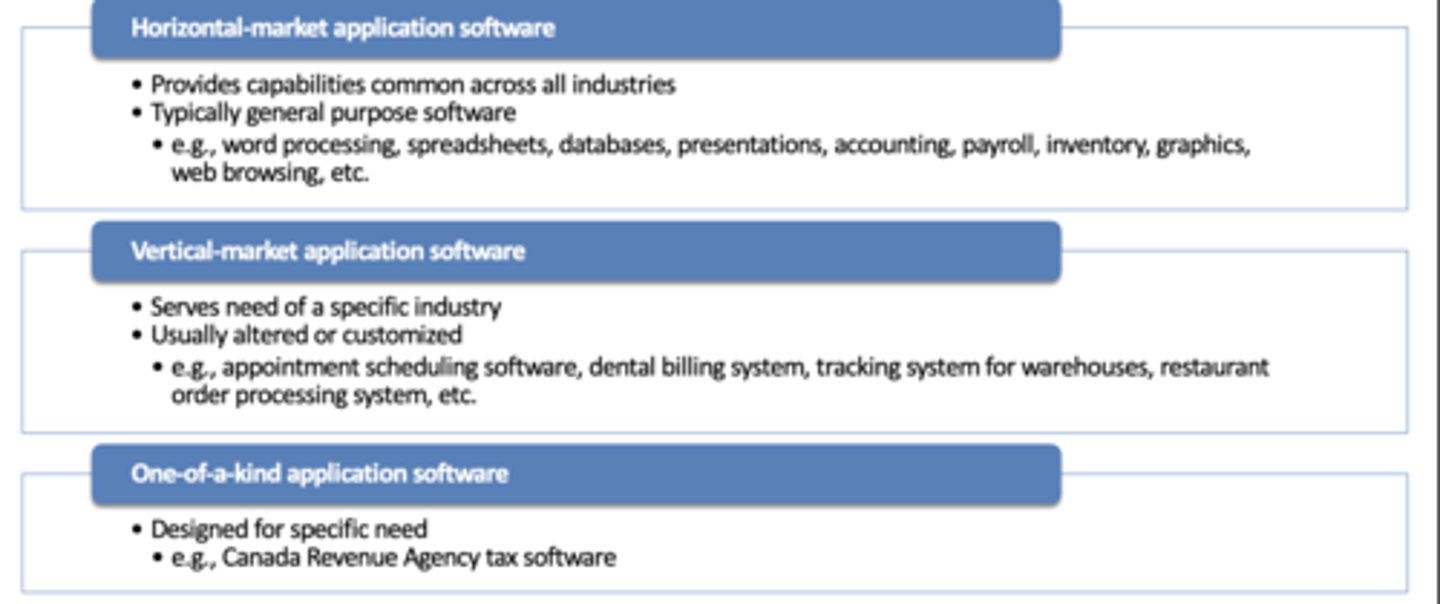
Vertical Market Application Software
serves the needs of a specific industry
Appointment scheduling
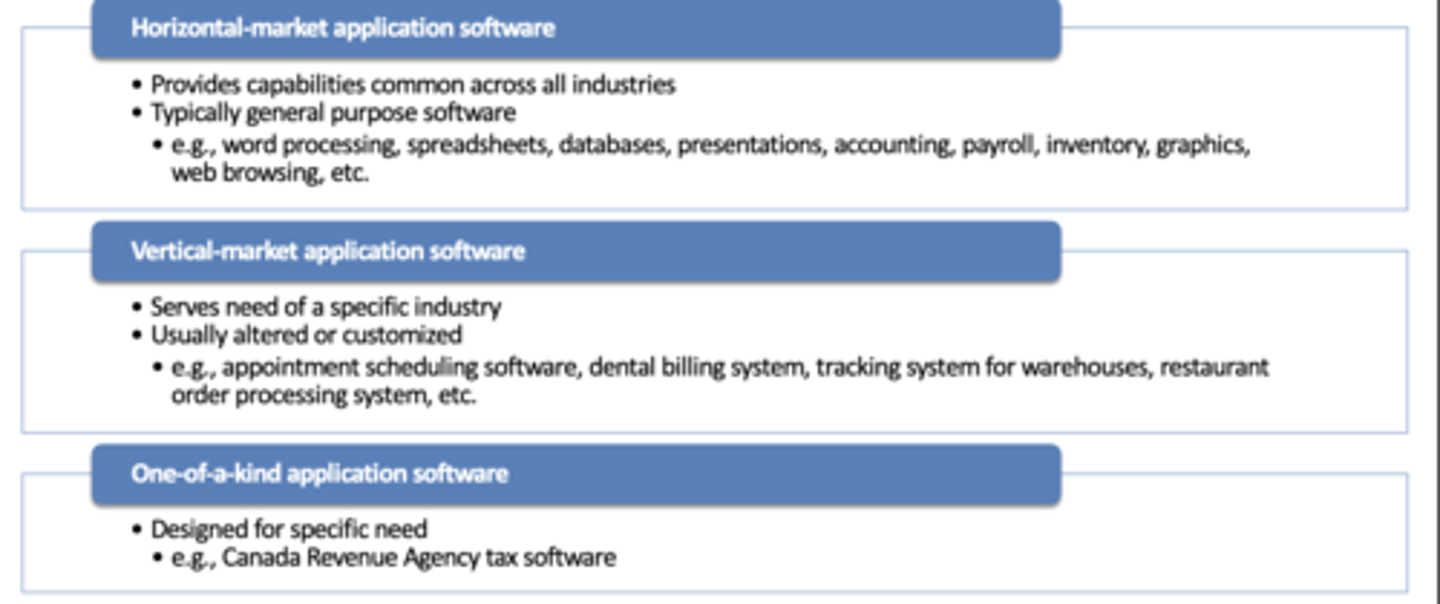
One-of-a-kind Custom Software
For a specific need.
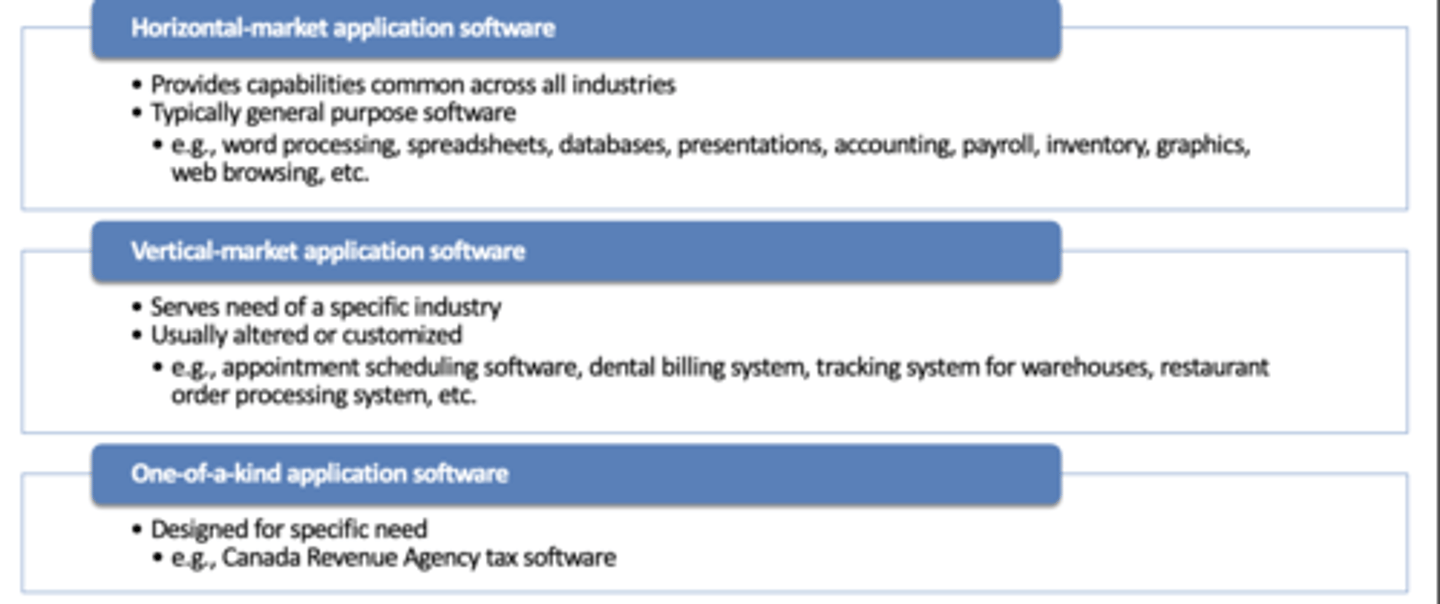
Moore's Law
the observation that computing power roughly doubles every two years.
Conceptual Design vs Logical Design
Includes:
Entity Relationship Diagrams (ERD) and Relational Database (Schema)
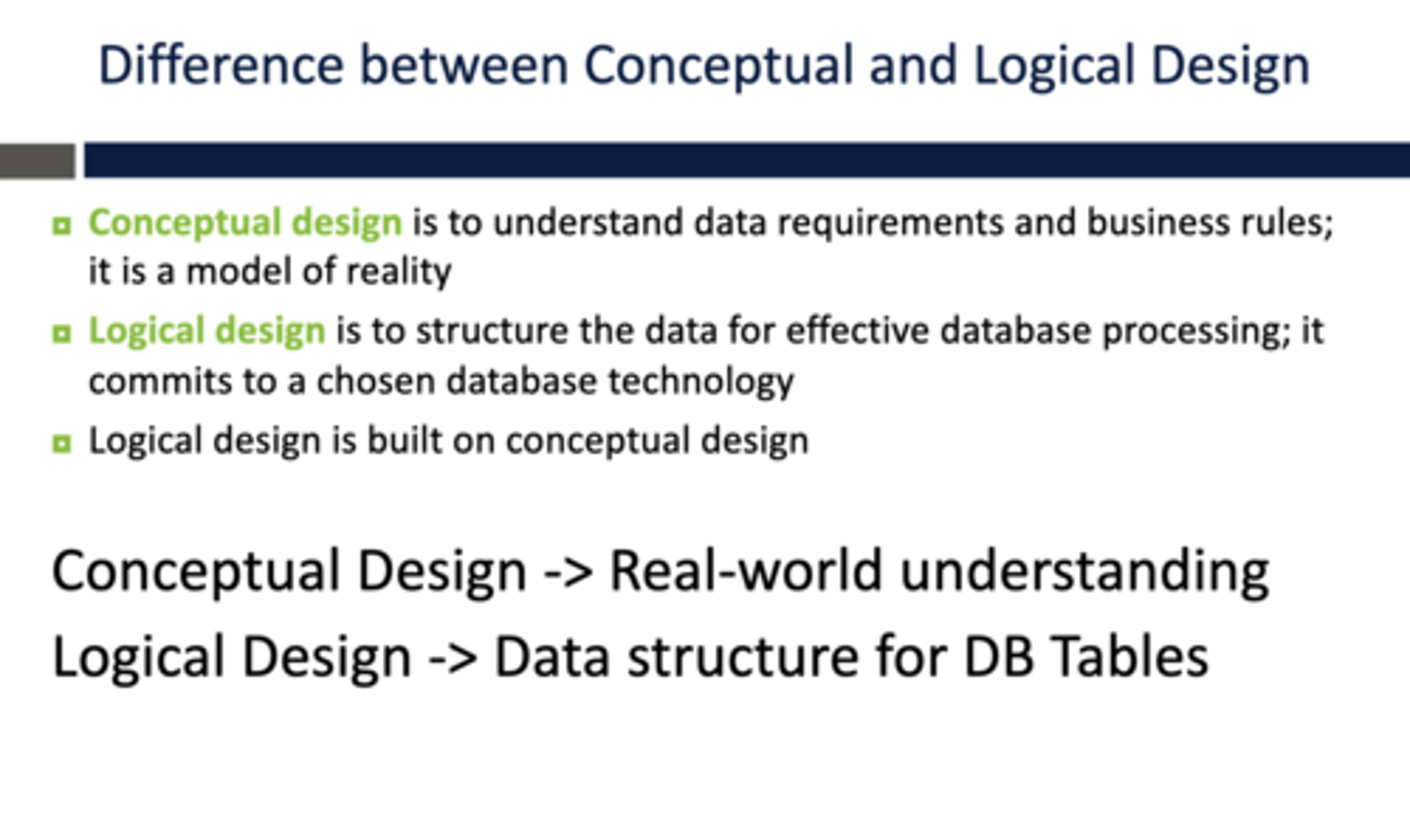
Database
A database is an organized collection of logically related data, typically stored electronically, and designed to support rapid retrieval, manipulation, and management by users or software applications.
ER diagram (ERD), what is it and what are the basic components?
A graphical representation of database requirements
Entities: Entities are distinct objects (people, events, places, or things) that are represented within a database
Attributes: Each entity can have a set of attributes describing some aspect of the object that is to be recorded
Relationships: Provide links between entities. Cardinality shows the type of relationship between two entities.
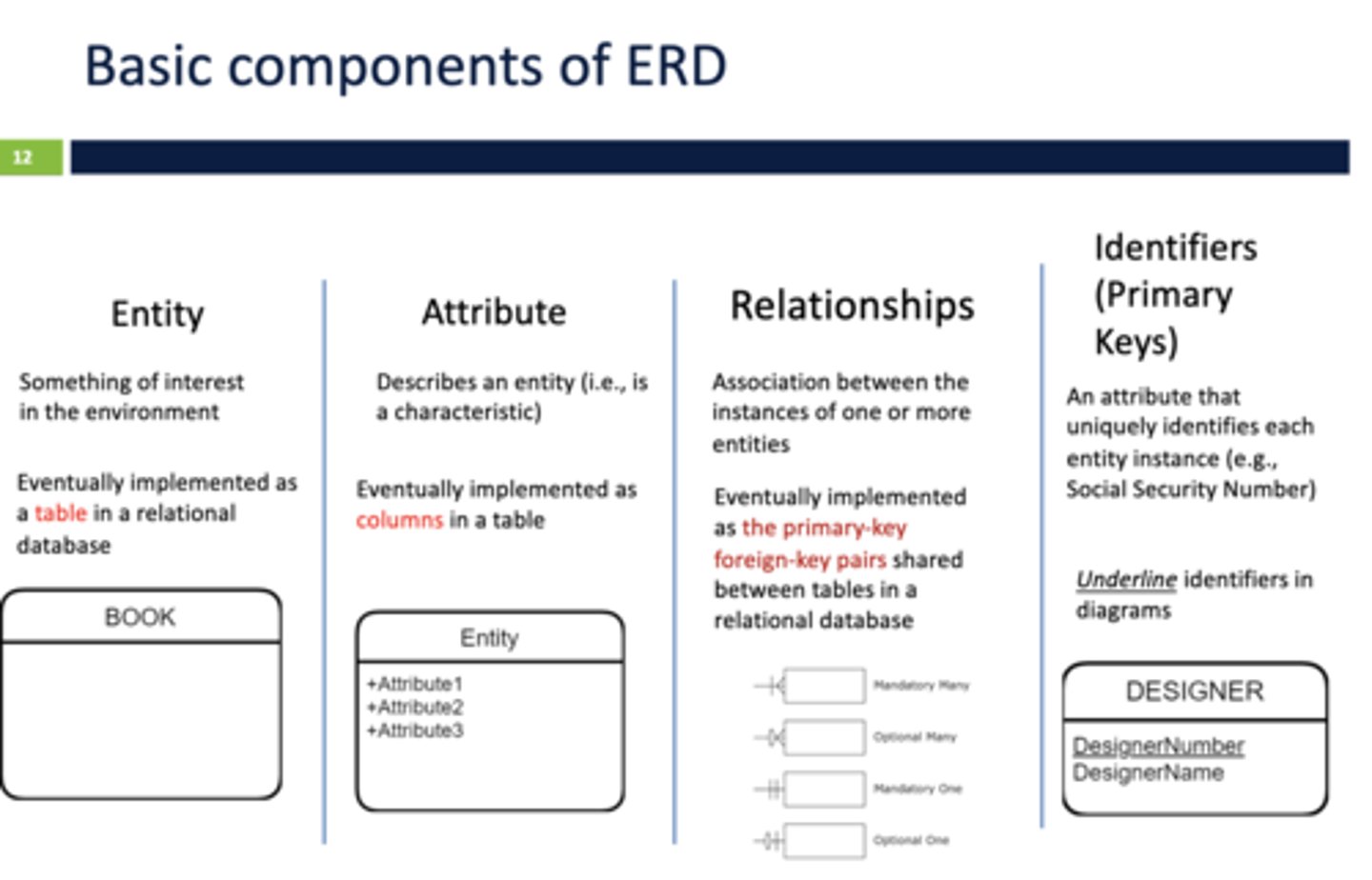
Cardinality Diagrams
One-to-One (1:1)n Each entity in the relationship will have exactly one related entity
One-to-Many (1:M)n An entity on one side of the relationship can have many related entities, but an entity on the other side will have a maximum of one related entity
Many-to-Many (M:N)n Entities on both sides of the relationship can have many related entities on the other side
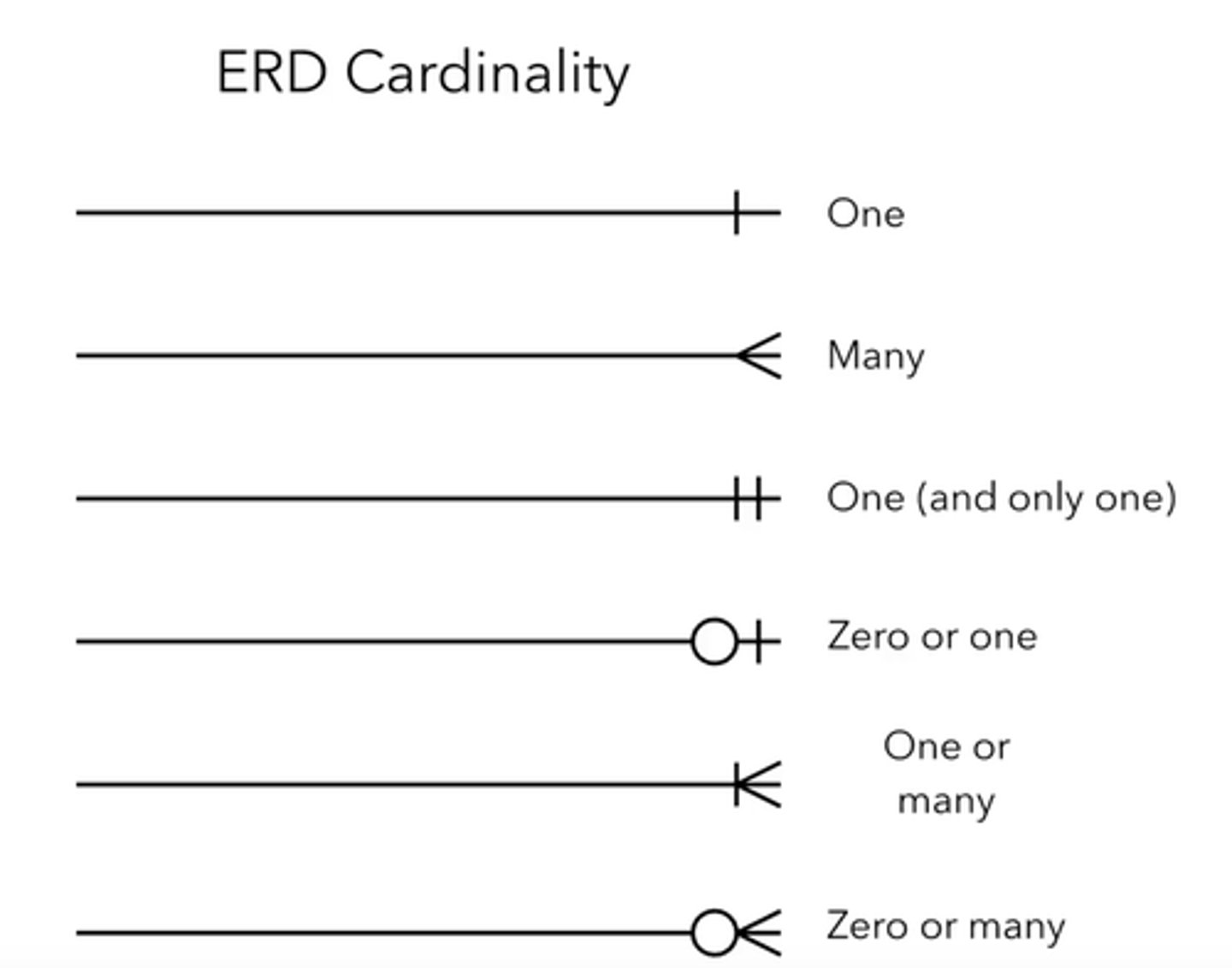
4 types of cardinality constraints
1) mandatory one
2) mandatory many
3) optional one
4) optional many
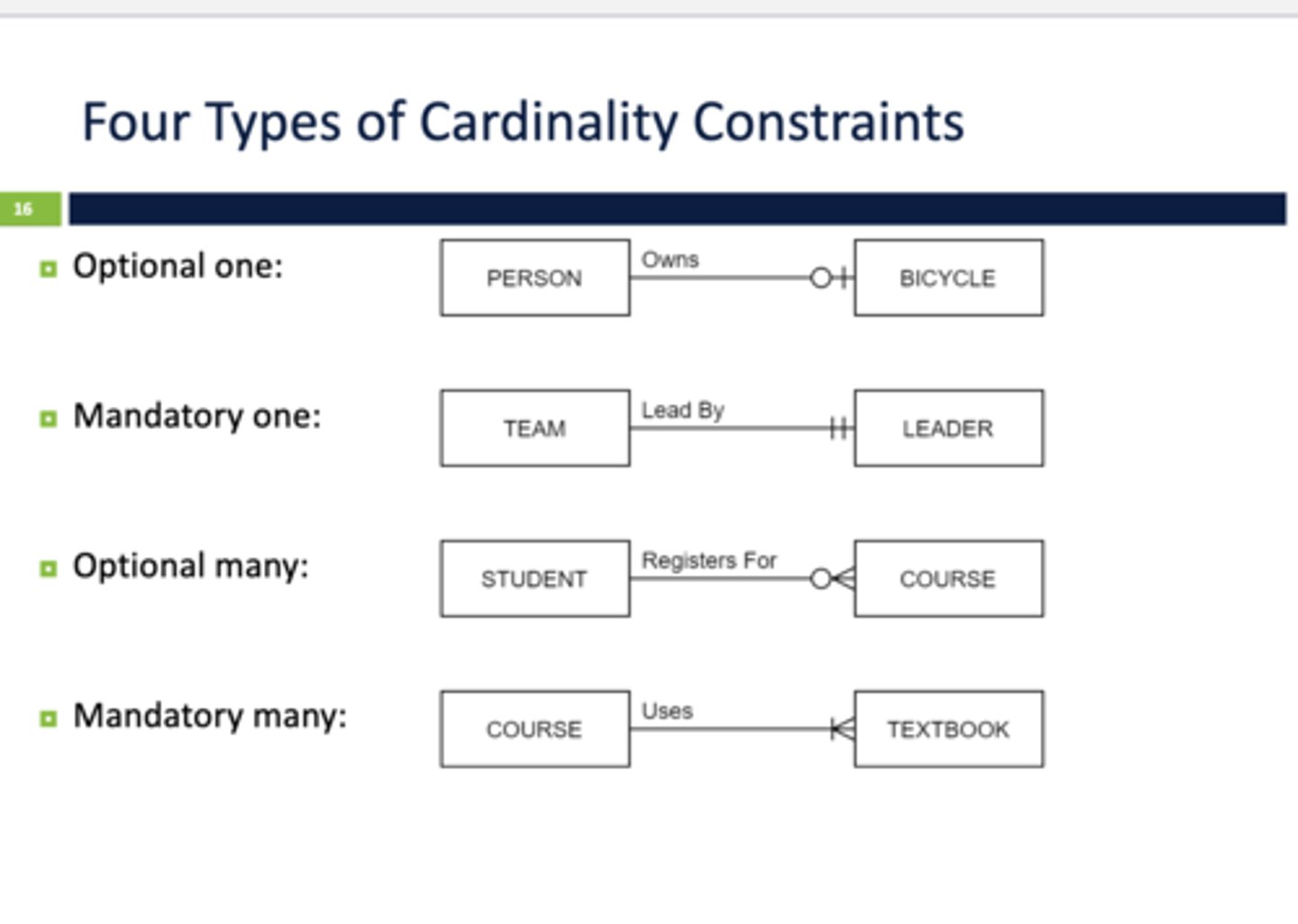
Steps for Drawing ERD
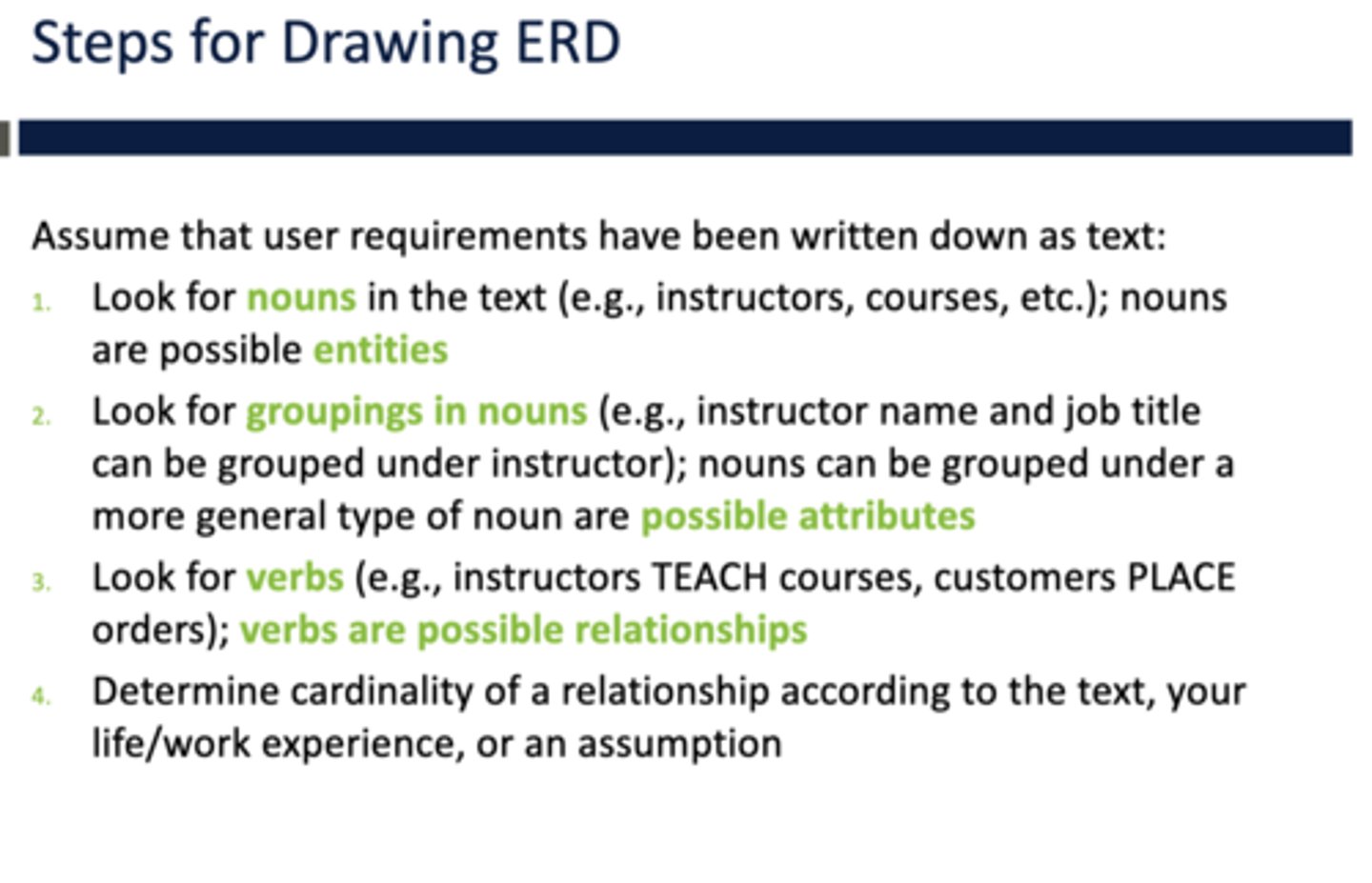
relational database model
a structured collection of data acces and utilized by many different applications and users.
Components include Tables/Files + Relationships among Rows in Tables + Metadata
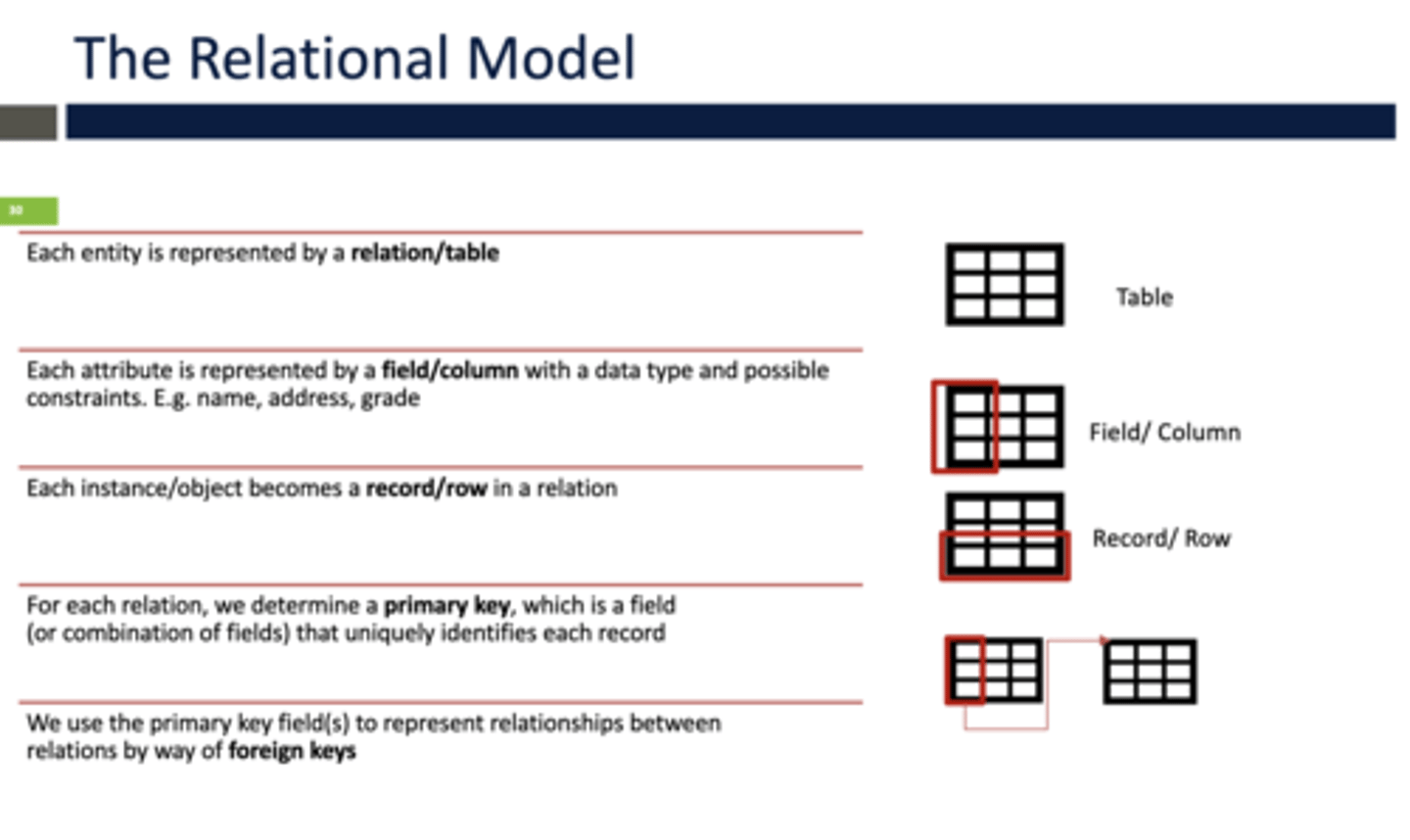
Primary Key
A field (or group of fields) that uniquely identifies a given entity in a table.
Atomic Key or Composite Key (2 or more)
- Atomic Primary Key: consist of only one field
- Composite Primary Key: consist of more than one field
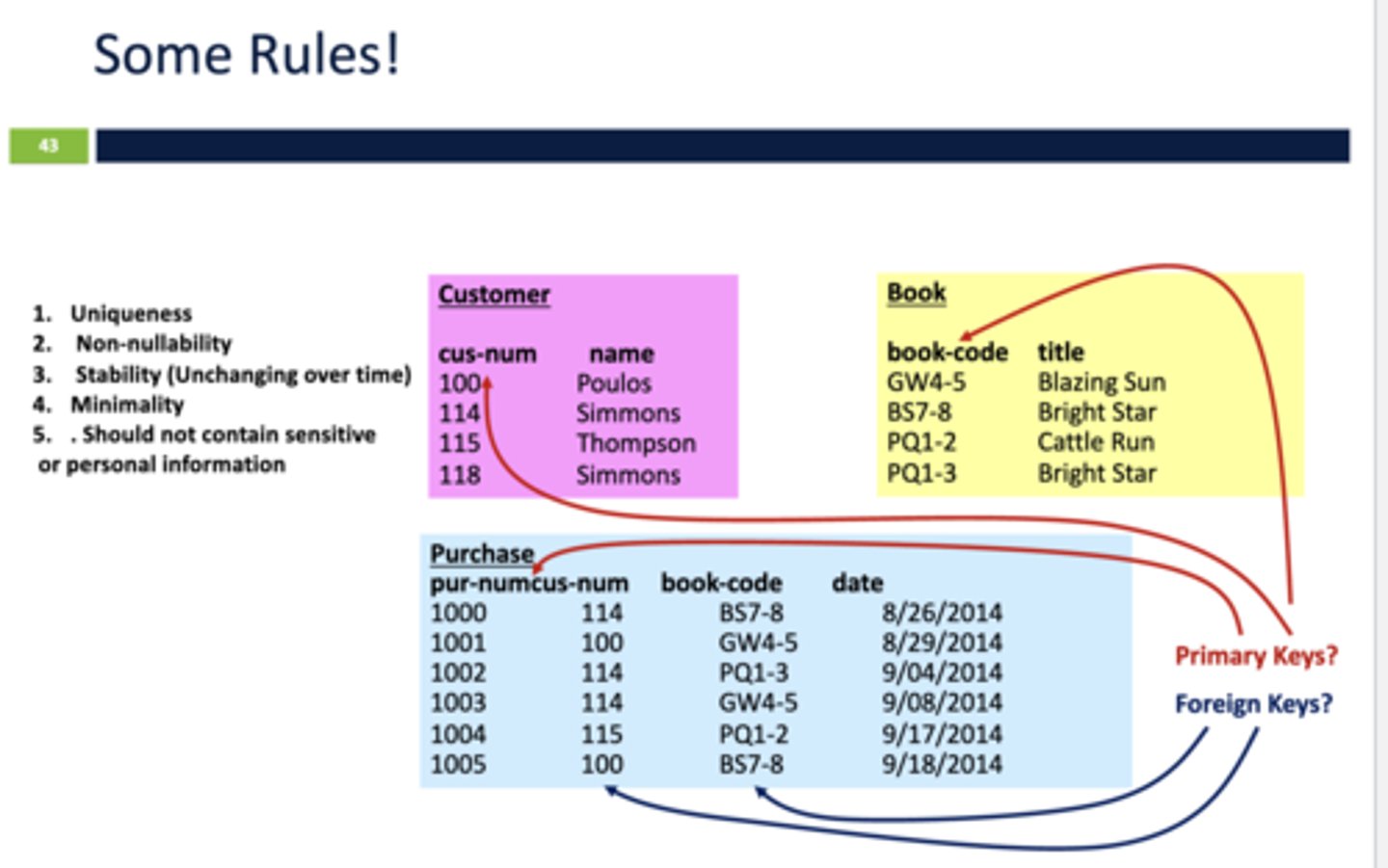
Foreign Key
A primary key of one table that appears as an attribute in another table and acts to provide a logical relationship between the two tables
A way to make a relationship between tables. Null FK are okay.
Metadata
Data that describes other data. For example, a digital image may include metadata that describe the size of the image, number of colors, or resolution.
DBMS (Database Management System)
a product used for the storage and organization of data that typically has defined formats and structures
Flat file database
One large single table; used if the amount of data that is being recorded is fairly minimal
Field
A column in a database table.
record
A row in a database table.
attributes (database)
Describing some aspect of the object or entity
Data Normalization
When you normalize the data, you want to eliminate repeating groups to create normalized tables, each containing only one relation
- Within one table, each row must be unique and identified by primary key
- Within each row, each value is each col must be single-valued
- Multiple variables are not allowed
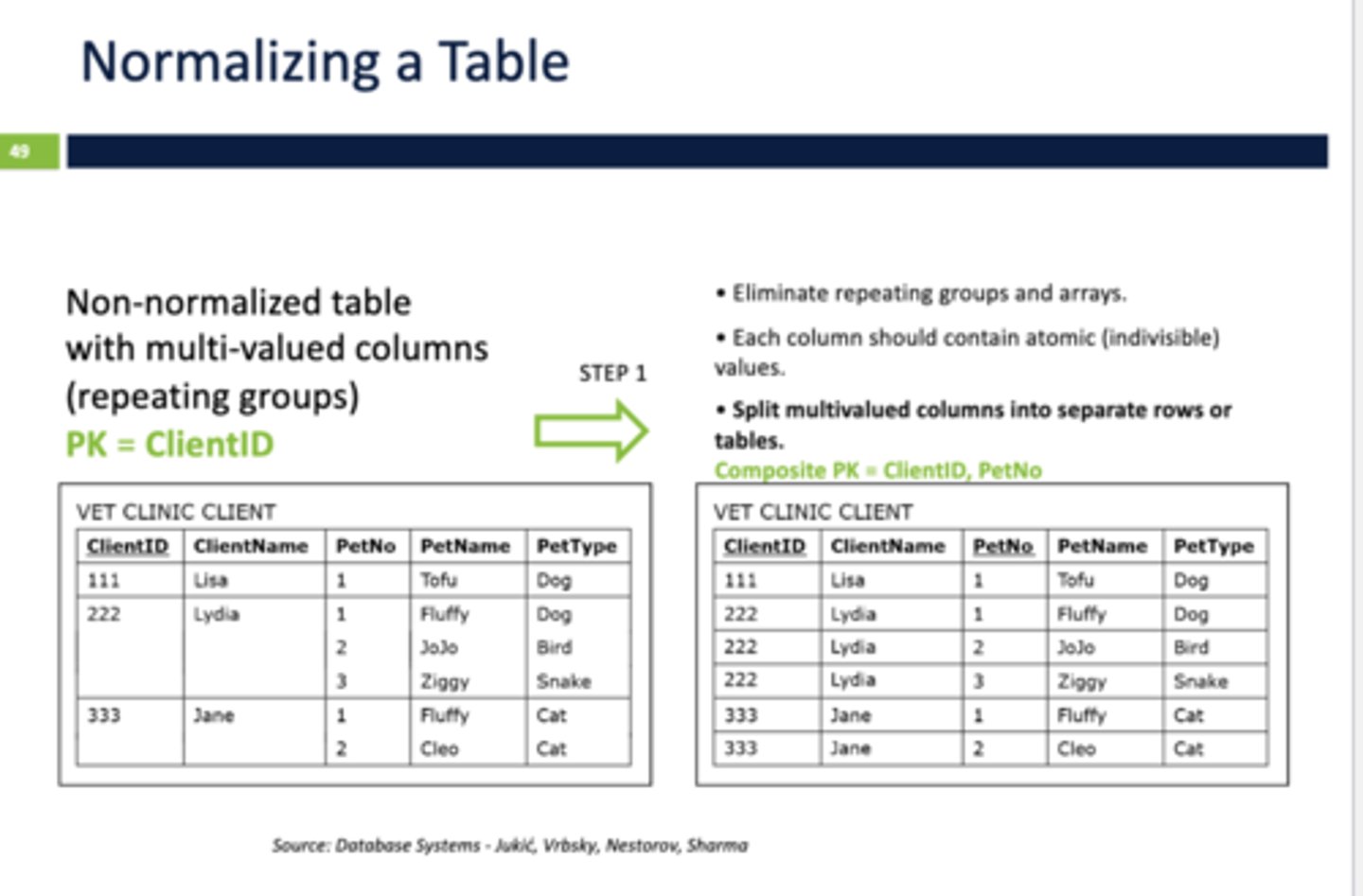
Why do we normalize data?
To resolve undesirable dependencies, remove redundancies, eliminate repeating groups.
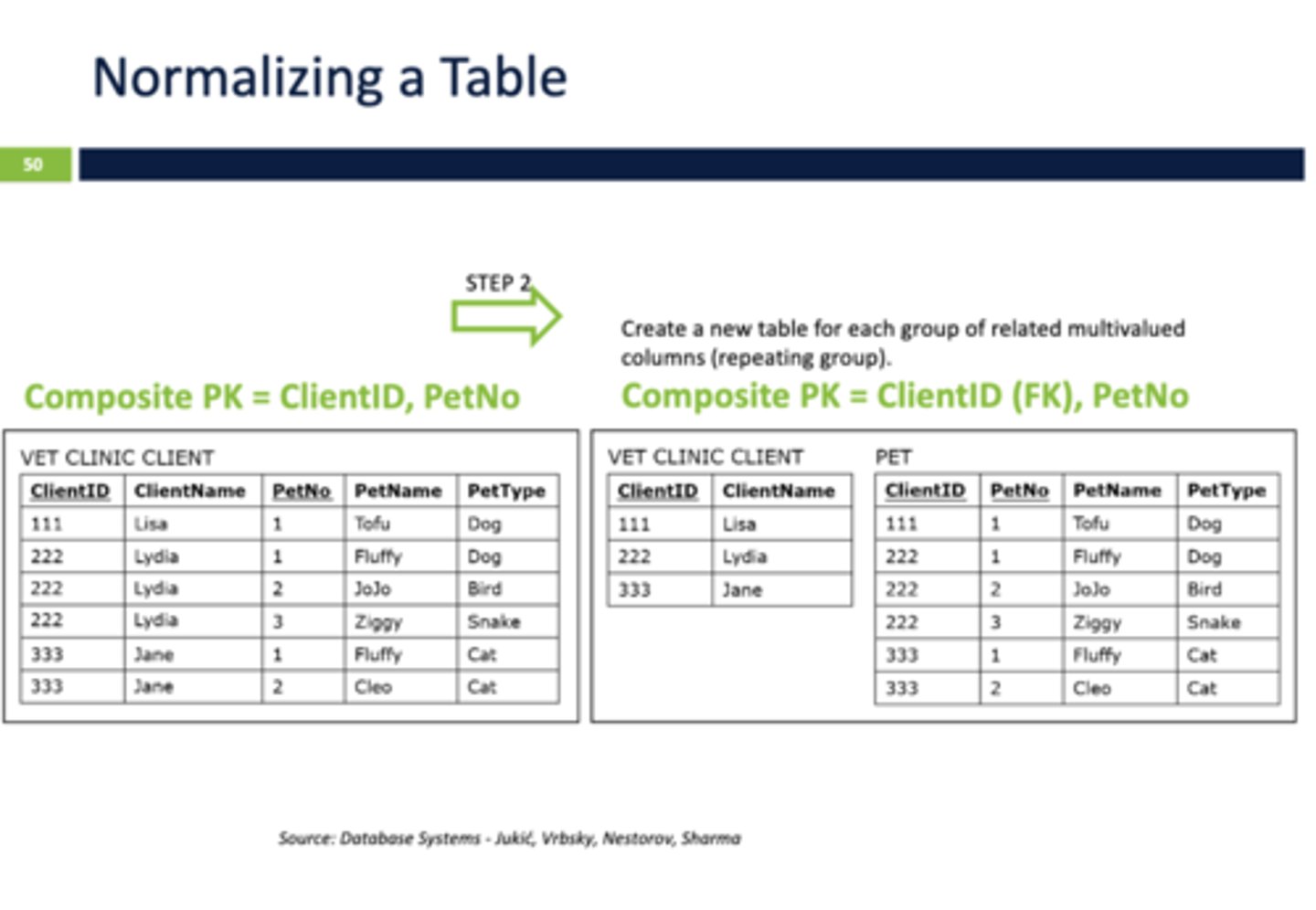
NoSQL
A new generation of database management systems that is not based on the traditional relational database model.
Database vs. Spreadsheet
database: stores more data, user-friendly interface, data linkage complex relationships, creates reports...
spreadsheets: small amount of data, cannot relate multiple tables, uncomplicated data relationships, good for calculation and visualization
entities
Data contained in the database (students, course, grade)
SQL (Structured Query Language)
A language that provides a standardized way to request information from a relational database system.
SELECT * (The attribute)
FROM (table to be used)
WHERE (speicify conditions)
Can dragging and dropping different fields.
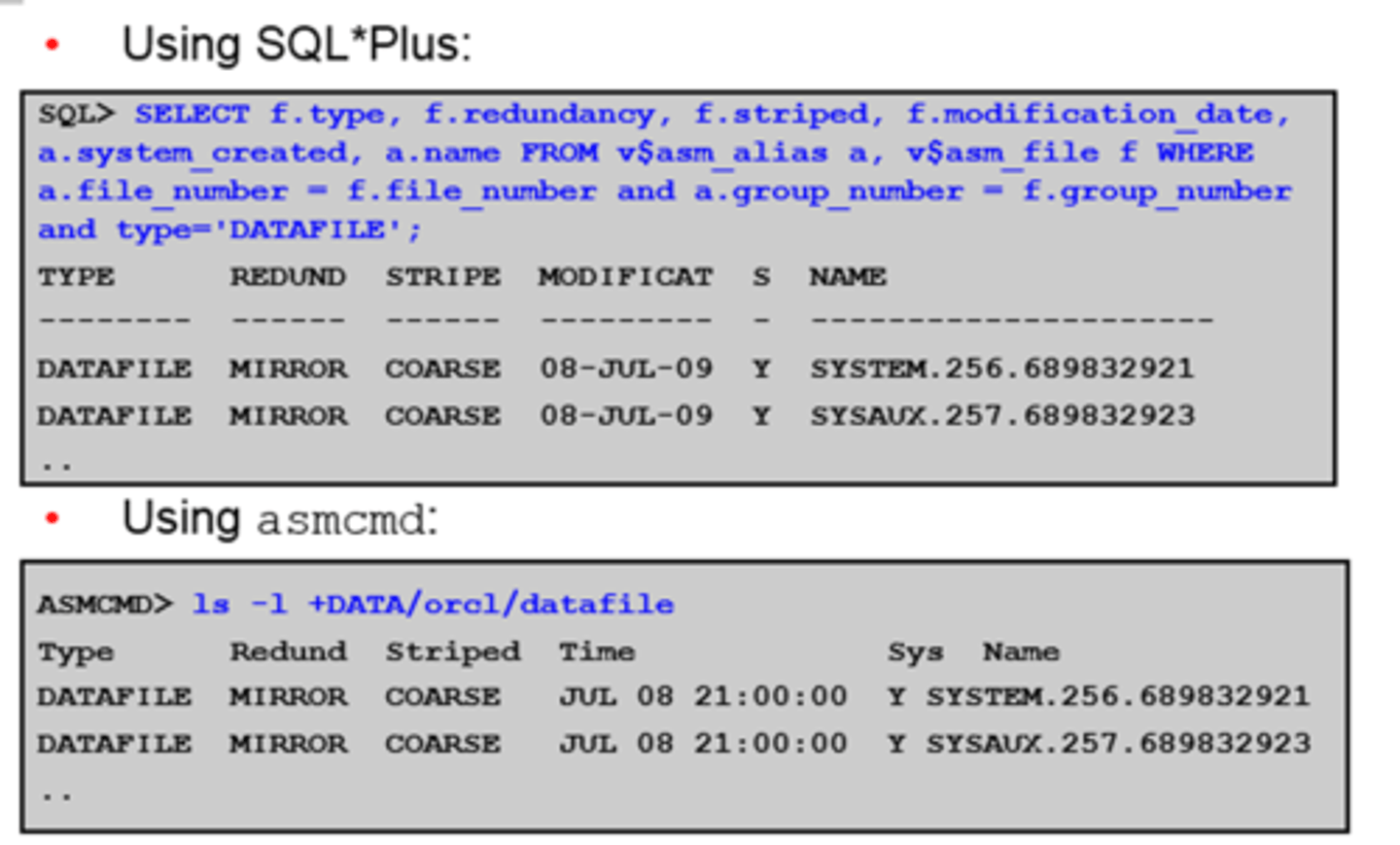
QBE (query by example)
Using a grid to form queries where fields can be added, sorted, compared, etc.
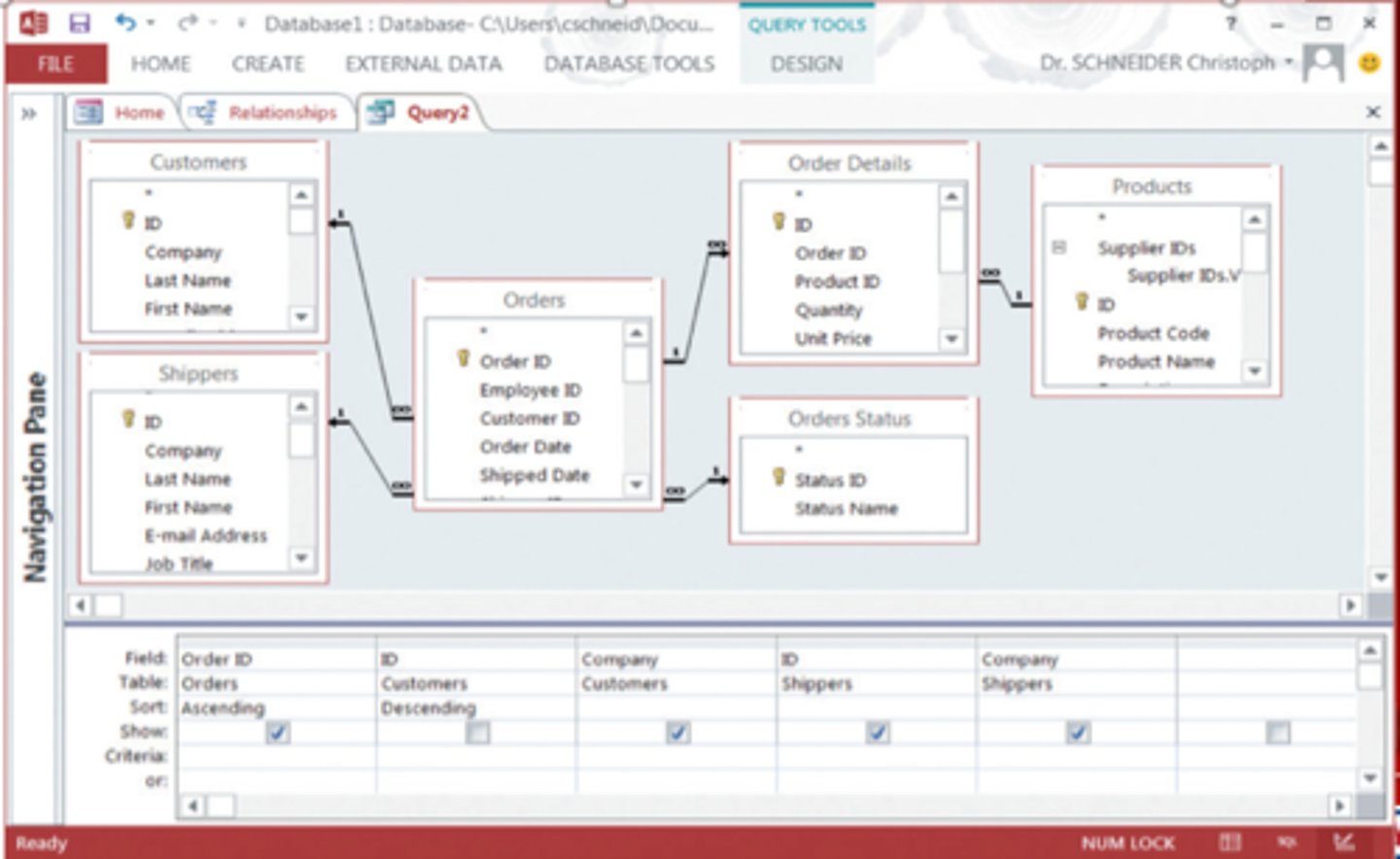
Parent table and child table
The master table vs the subset table (related by foreign keys).
Do ERDs have keys?
No, they only have unique identifiers that are usually underlined.
No attribute is repeated, it is all joint with cardinality legends.
Business Intelligence
Information collected from multiple sources such as suppliers, customers, competitors, partners, and industries that analyzes patterns, trends, and relationships for strategic decision making
operational decisions
short-run decisions to help implement strategies
Supported by TPS Transaction Processing Systems
day-day activities
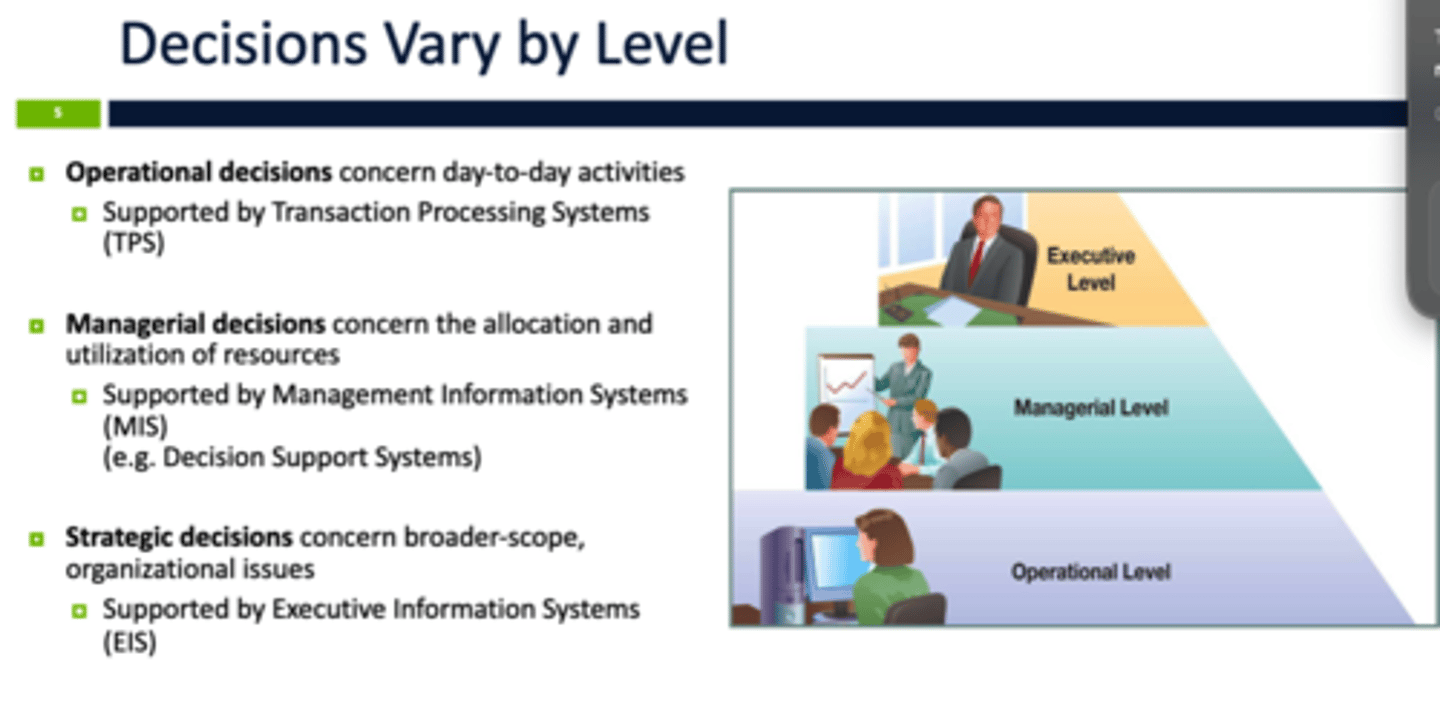
TPS (Transaction Processing System)
supports the monitoring, collection, storage, and processing of data from the organization's basic business transactions, each of which generates data
What do managers need to make decisions
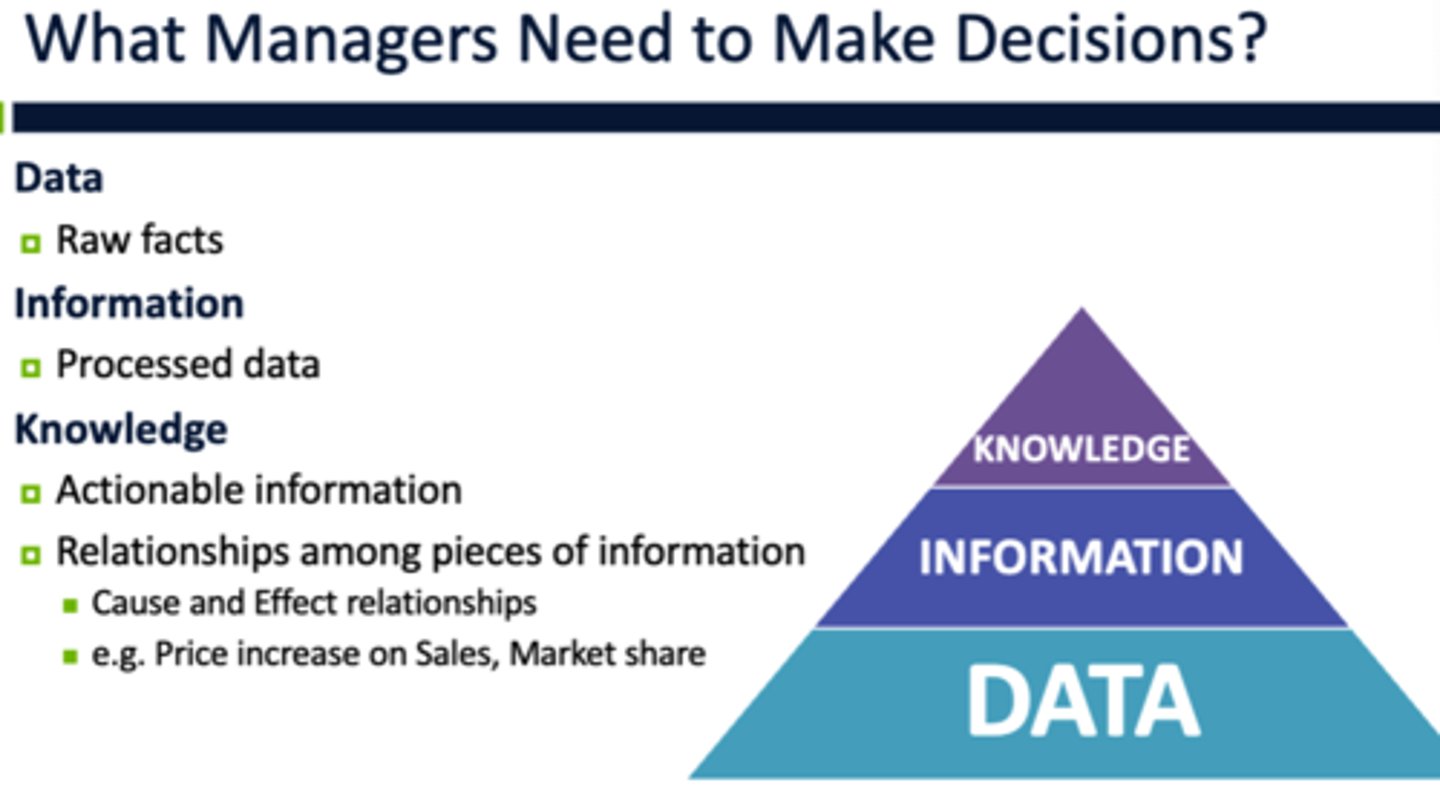
Managerial Decisions
decisions about the allocation and utilization of resources
Supported by MIS
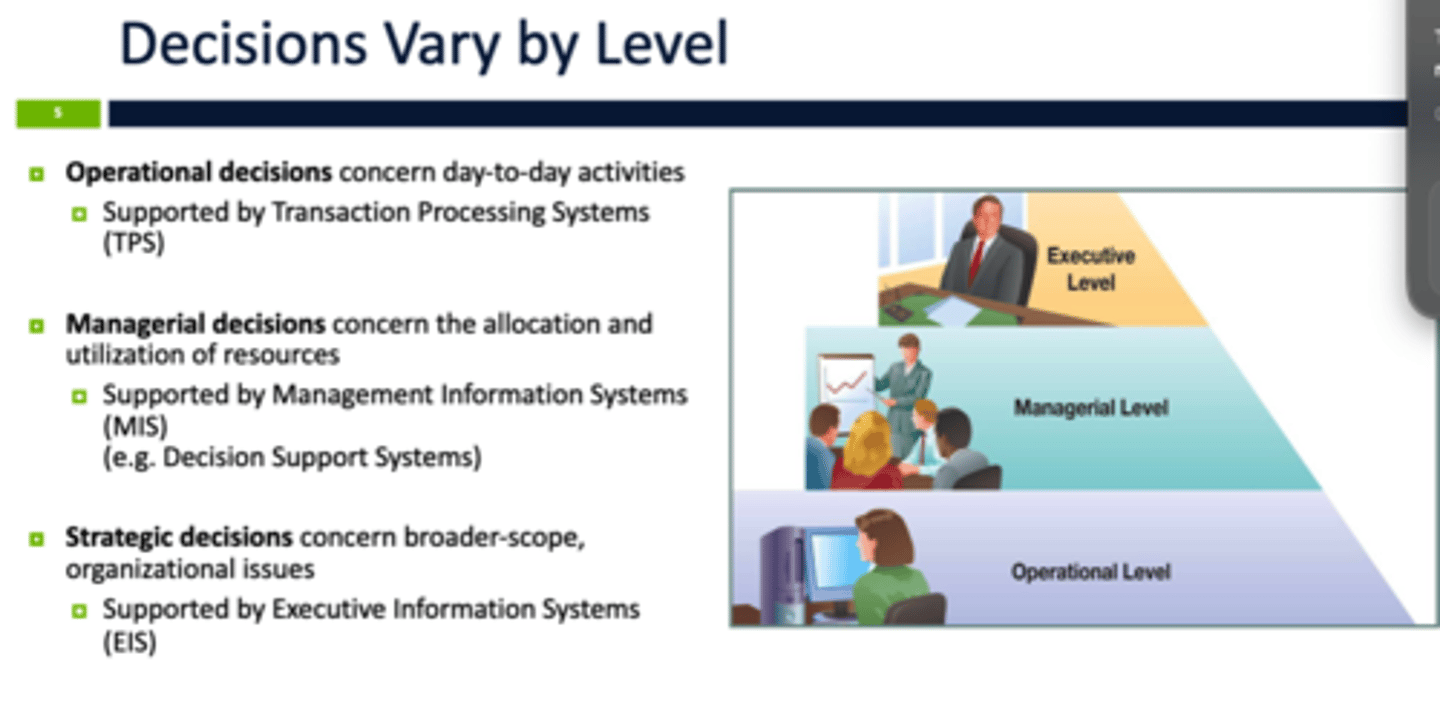
Management Information Systems (MIS)
A business function, like accounting and human resources, which moves information about people, products, and processes across the company to facilitate decision-making and problem-solving
Strategic Decisions
those that support broad-scope, organizational issues
EIS
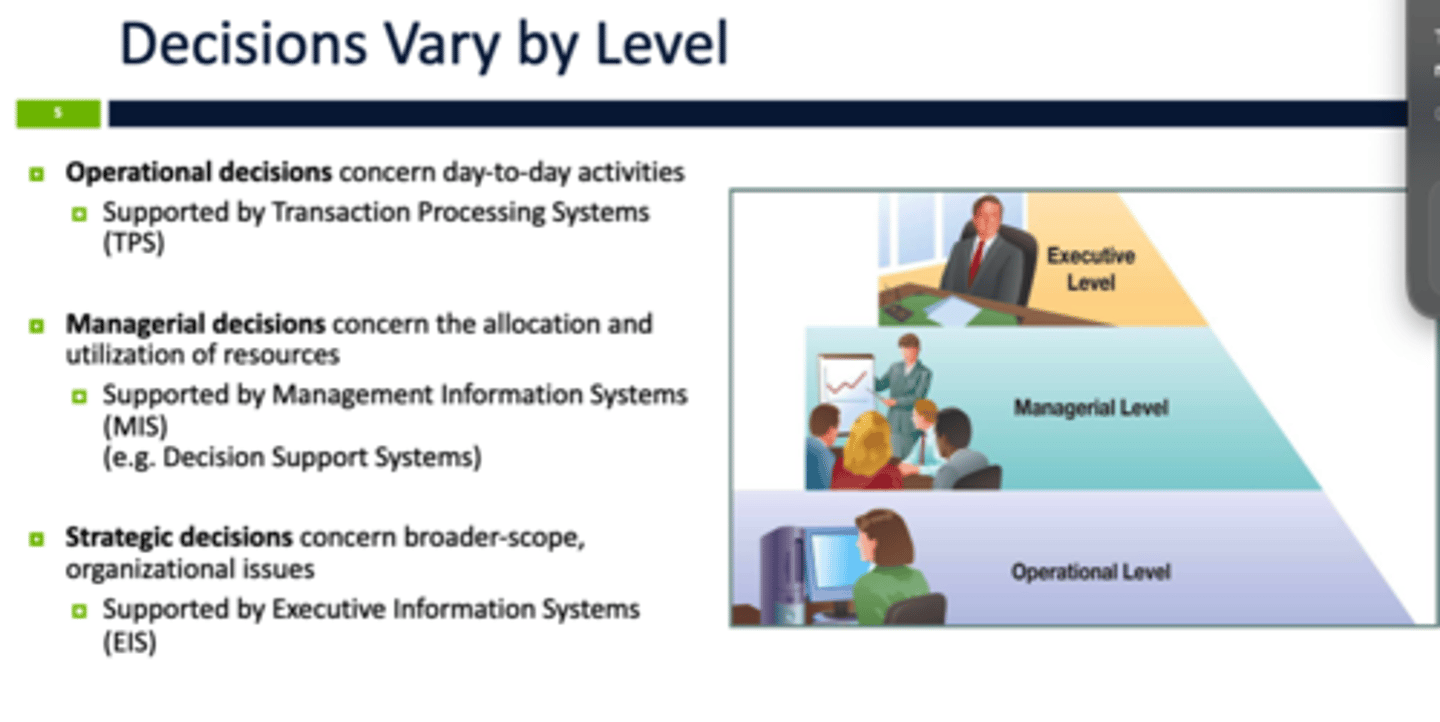
Executive information system (EIS)
A specialized DSS (Decision Support System) that supports senior level executives within the organization
structured decisions
Situations where established and accepted methods for making a decision
More so TPS (operational)
unstructured decisions
Occurs in situations in which no procedures or rules exist to guide decision makers toward the correct choice
More so EIS systems (Strategic)
i.e: Who should I marry?
OLTP (online transaction processing)
Capturing and storing data from ERP, CRM, POS
Day-to-day business transactions
The main focus is on efficiency of routine tasks
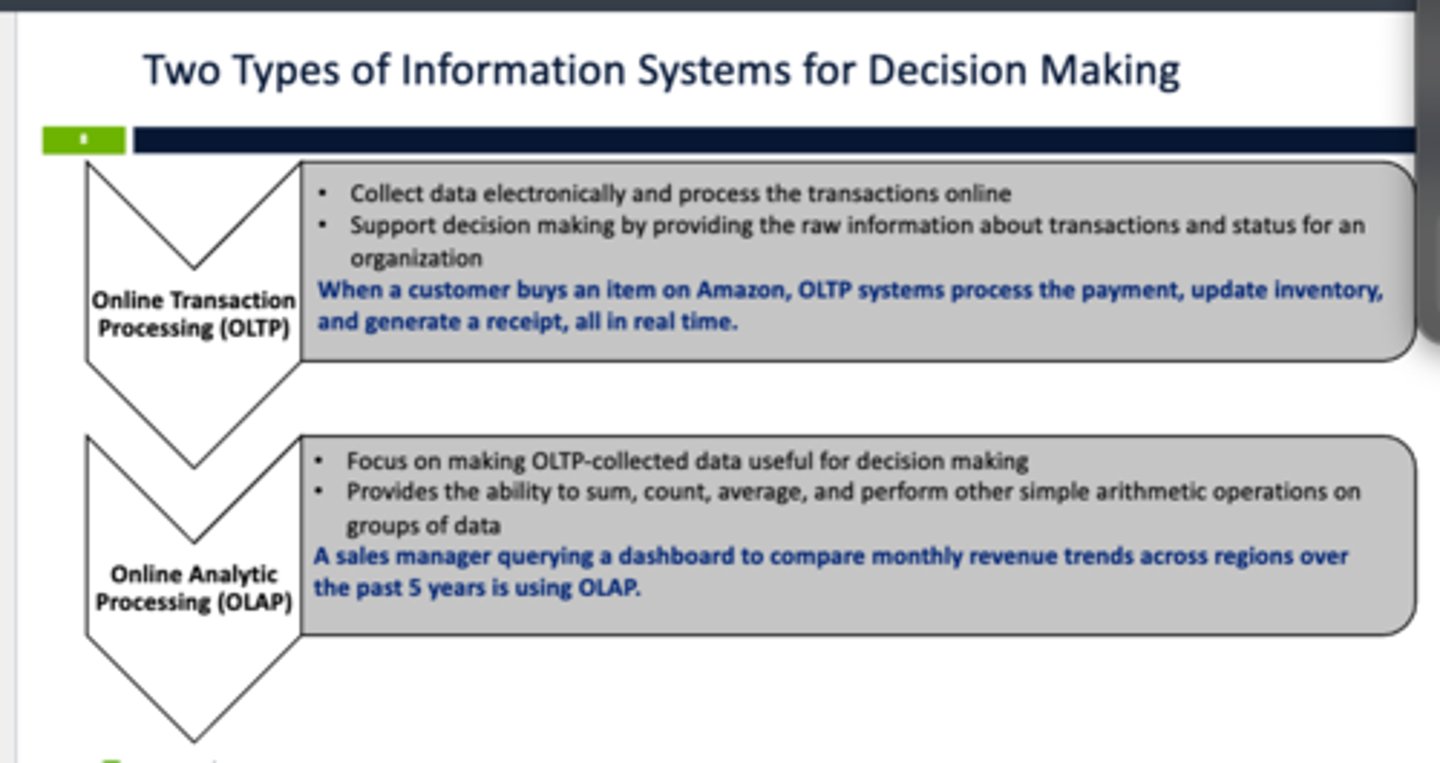
OLAP (online analytical processing)
Manipulation of information to create business intelligence in support of strategic decision making
Ability to sum, count, average,
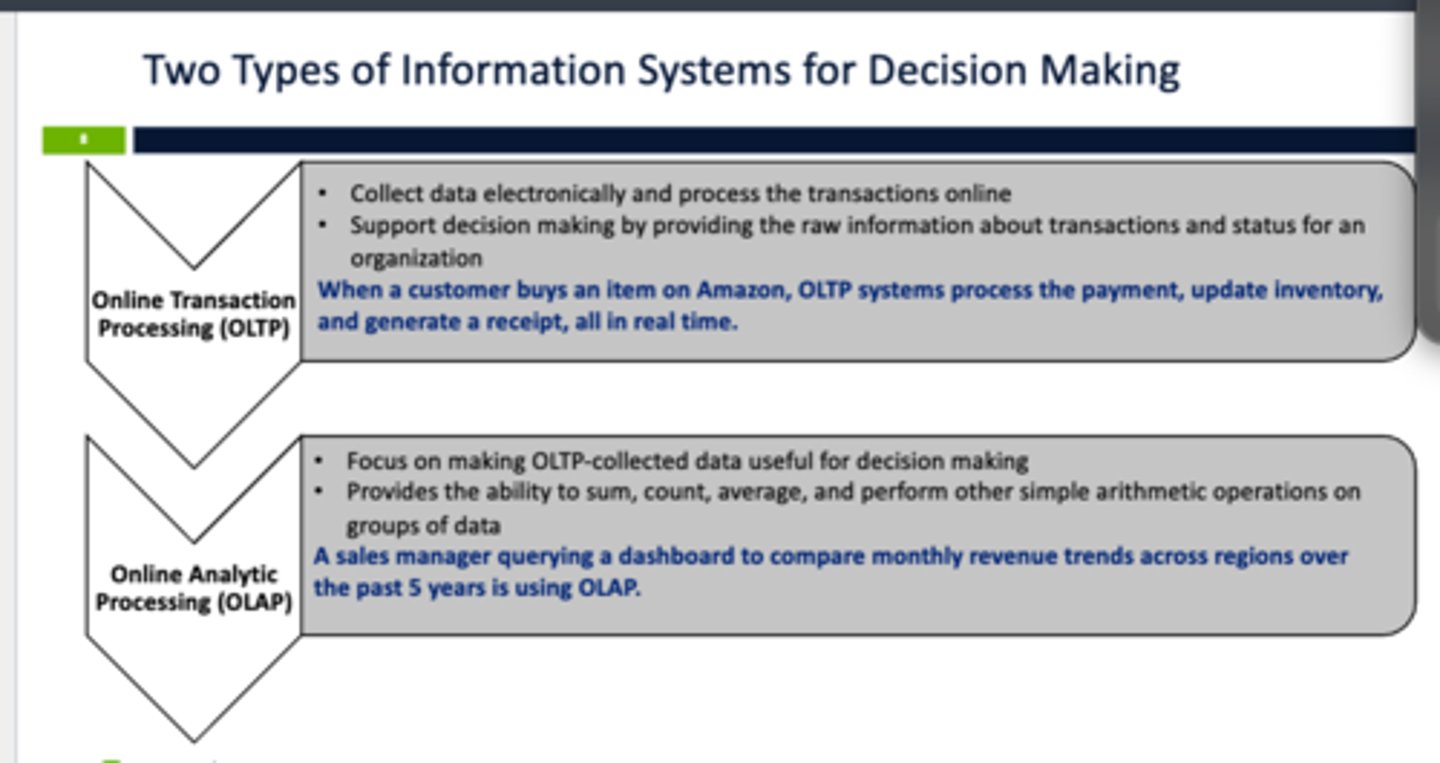
BI
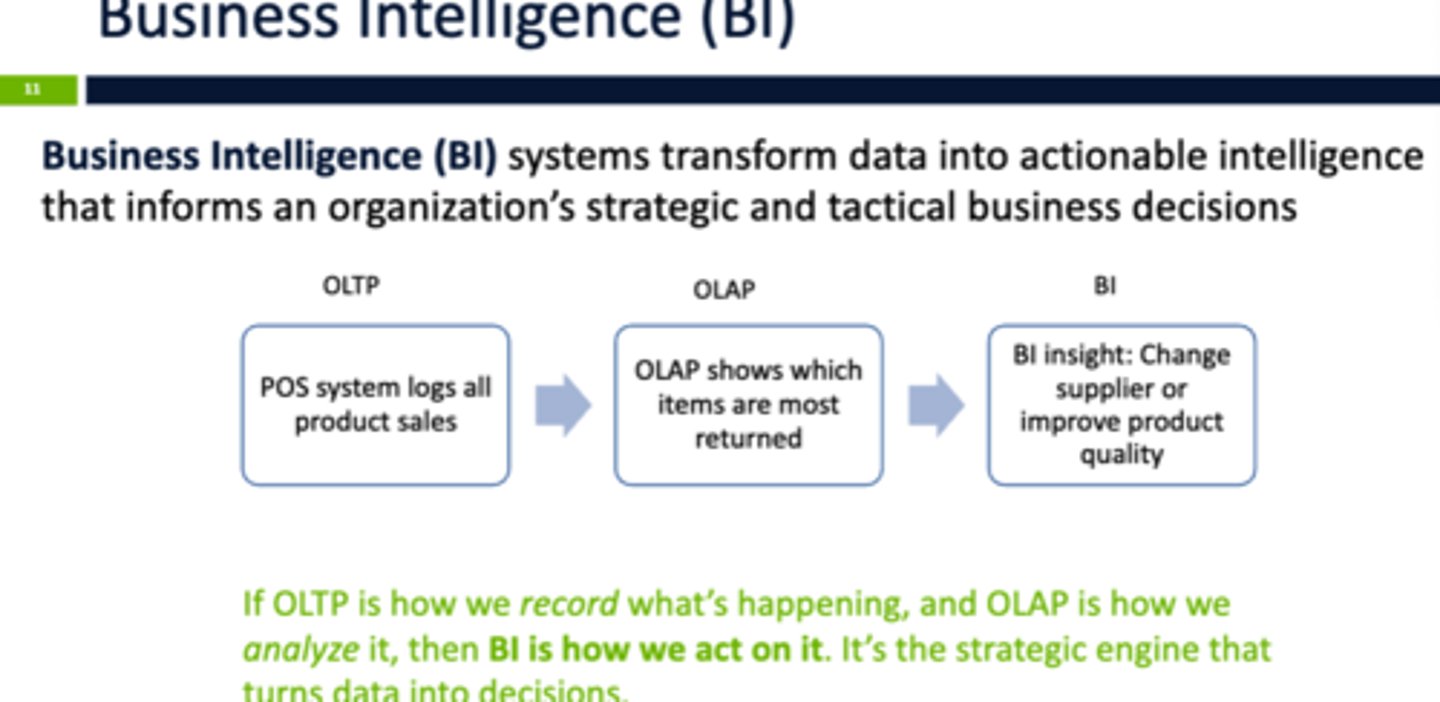
data warehouse
a large repository database that supports management decision making
Prepares data for BI Processing
Extract and clean data from opeational systems and other sources
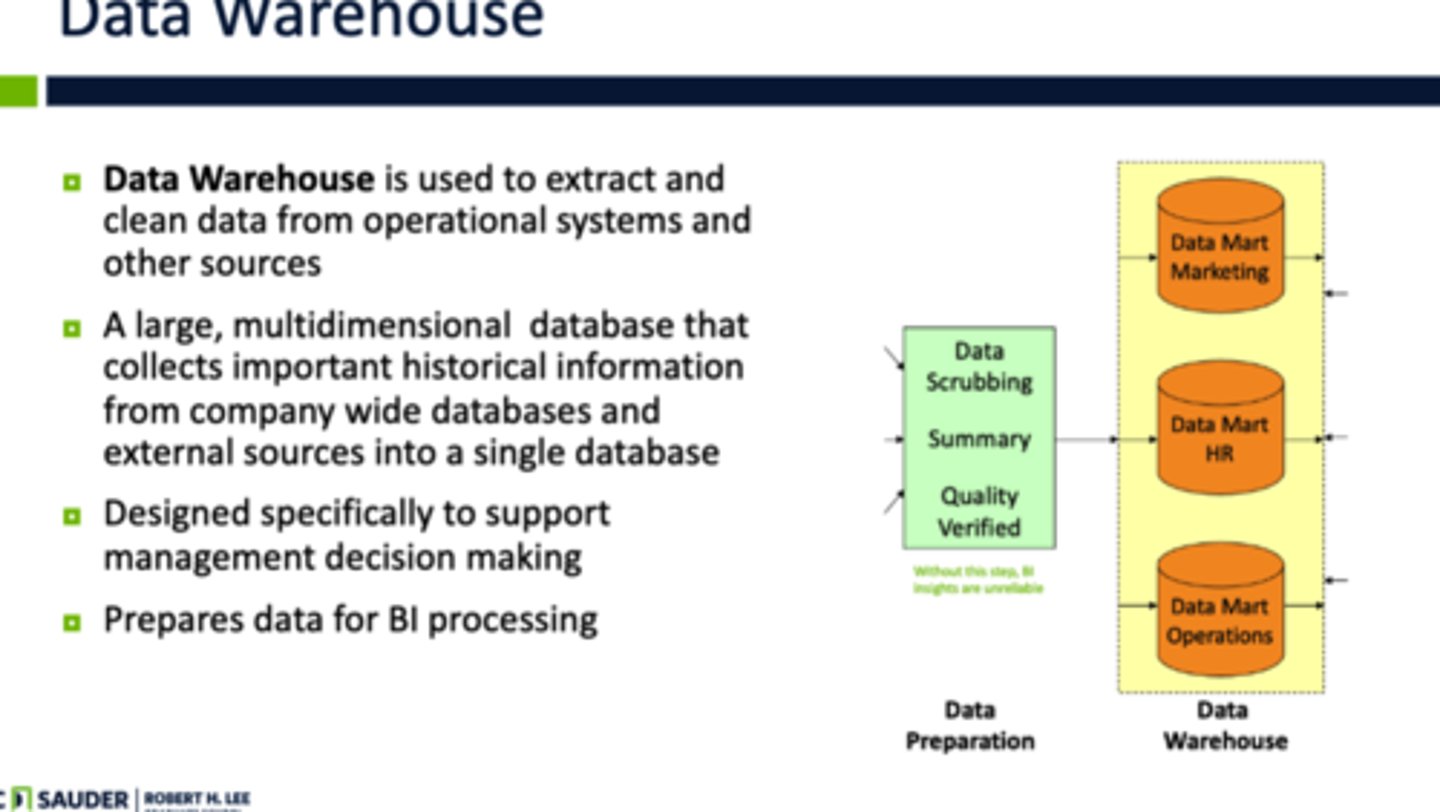
data mart
a data collection, smaller than the data warehouse, that addresses the needs of a particular department or functional area of the business
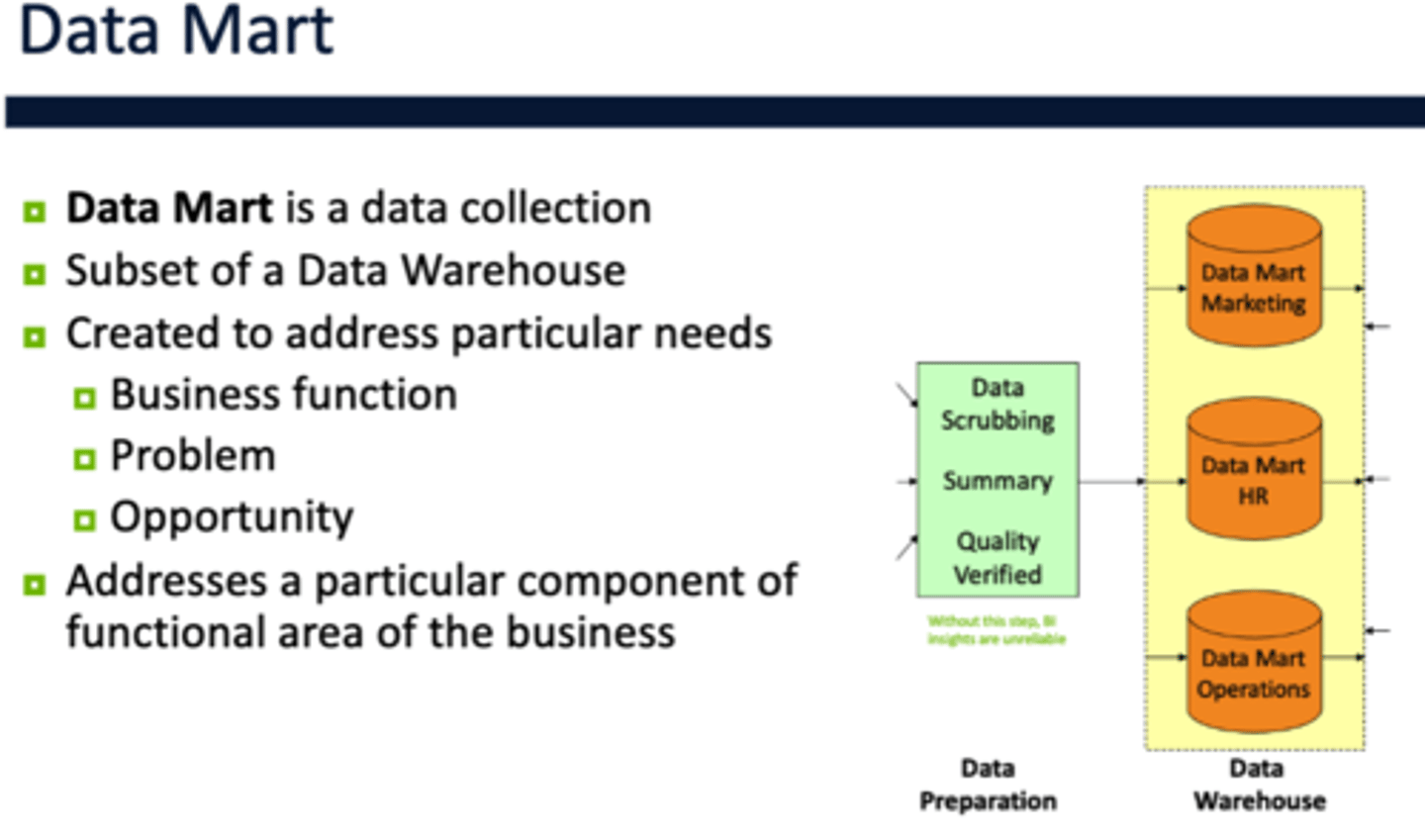
data mining
the process of analyzing data to extract information not offered by the raw data alone
How do you identify a continuous field in Tableau
Green Pill in a visualization
What data type contains a Tableau workbook along with local data
.twbx
T/F - Can Tableau automatically create the correct data types, once uploaeded?
False - Have to double check to make sure.
What colour in Data Panes are discrete values?
Blue
IT projects
Temporary Goal-Oriented Initiatives
renew and adapt the IT infrastructure to keep IT working effectively
- Have a large information technology component (in terms of budget or personnel)
- Such projects affect data, people, and processes
Risks with IT projects
